By Fabrice DeClerck, Alexander Fremier and Louise Willemen
Much of the world’s poor are highly dependent on ecosystems in which they live. These ecosystems, in many cases, are highly degraded which limits the resources and processes people depend upon. Water, Land and Ecosystems (WLE), a CGIAR research program, is investigating ways to improve the livelihoods and food security of these populations through ecosystem service-based solutions and approaches. WLE will highlight this work at the Ecosystem Service Partnership (ESP) conference in Bali next week.
The Ecosystem Service and Resilience Working Group of WLE is using this opportunity to launch its Ecosystem Service and Resilience (ESSR) Framework for the program. The ESSR framework provides a lens to reconsider development challenges by accounting for ecosystem-scale processes, external shocks and inevitable change. We are celebrating this launch with a month long focus on the ecosystem services, provided from natural and human-modified ecosystems, on WLE’s Agriculture and Ecosystems Blog, starting with the blog posts surrounding the ESP conference, Stockholm World Water Week, posts from our partners, and culminating with blog updates from WLE’s scoping study of the Volta Basin the second week of September.
Why focus on ecosystem services in rural communities?
Agricultural development has progressed in leaps and bounds to feed the global population, but not without environmental and production costs. These environmental costs have limited the ecosystem services on which we depend, including agricultural production as well as access to clean water, protection from natural disasters and fertile soils. An ecosystem service-based approach reconsiders these decisions and aims to move beyond agriculture that ‘does no harm’, to an integrated approach that boosts agricultural production concurrently with other benefits such as soil and water quality, biological conservation, and increased resilience of rural communities.
Read more in our flyer: Ecosystems Services and Resilience Framework
Principles of the WLE Ecosystem Services and Resilience Framework
Harnessing ecosystems services for poverty reduction and agricultural development requires a significant shift in perspective from more traditional ecosystem service-based approaches that focus primarily on services provided by protected areas. WLE’s Ecosystem Service and Resilience Working Group considers eight principles that highlight this perspective:
- People are fundamental – understanding how people benefit from ecosystem services is the central objective of our work.
- Human and natural ecosystems are tightly coupled – WLE uses a systems-based approach to highlight the interactions between human and natural systems.
- Governance structures and institutions: Ecosystem services can be classified as common pool resources, novel governance structures and institutions are central to their management.
- Ecosystem services needs to be part of the global agricultural development discussion – Amongst the many approaches to agricultural development, ecosystem service-based approaches that restore, harness and conserve our natural resources must be included.
- Multi-functionality – Agricultural landscapes are important for multiple functions, crop productivity cannot be managed solely for its agricultural production at the expense of all other services.
- Design a resilient system –Agricultural landscapes and communities are constantly exposed to stress and shocks: anticipate and plan for change.
- Modify socio-ecological systems –Ecosystem service-based approaches to poverty alleviation may need to modify the composition and configuration of agricultural landscapes to ensure ecosystem service conservation and restoration. Likewise changes in governance structures and institutions may be needed to (re-) direct the benefit flows.
- Large Scales – ecosystem services are nested within multiple scales in agricultural landscapes. WLE embraces a basin-scale focus to define the context of agricultural systems, but identifies the finer scales at which ecological processes and institutions often operate.
The principles of the framework act as a guide for ecosystem service-based approaches to development interventions. We welcome your input on these principles and any insights from working with ecosystem service-based approaches. Members of WLE’s ESSR team will be present at the Ecosystem Service Partnership conference where we will are hosting a Tuesday afternoon workshop on Ecosystem services and development in resilient rural landscapes and where we will have a booth.
As we roll out our month-long focus on ecosystem services, we will highlight WLE and partner projects that utilize ecosystem service based approaches. See below for a full list of posts or click here for the summary post.
If you are interested in contributing a blog post for this focus month, email a.waldorf(at)cgiar.org with your post proposal or draft. Join the discussion now. Comment in the section below and let us know what you think about the principles. Tell us about your experiences.
See the flyer for more information:
Blog posts from AgEco's month-long focus on Ecosystem Services
August 19 to September 13
Week 1
A Month of Ecosystems by Fabrice DeClerck, Alexander Fremier and Louise Willemen
WLE is celebrating the launch of its Ecosystem Services and Resilience (ESSR) Framework with a month-long focus on WLE's AgEco blog. Read more about the ESSR Framework here.
Ladybeetles: Cotton's secret ingredient by Wei Zhang and Mark Rosegrant
A recent study by IFPRI finds certain crop land use has the potential to control cotton pests by fostering habitats for natural pest enemies such as the ladybeetle.
Can Africa overcome the perfect storm? by Carlo Fadda
Africa faces two major challenges in the coming 50 years: the conservation of landscapes along with the biodiversity in them and securing enough food for an ever-increasing population - all under a changing climate that is negatively affecting Africa's agricultural productivity.
Give bees a chance by Barbara Gemmil-Herren and Hien Ngo
Pollination is one of 17 recognized ecosystem services. Over 35% of food produced is dependent on animal pollination. Yet there have been mounting questions about how relevant pollination may be to agricultural development and food security.
Week 2
Ecosystem Services take a central role in disaster risk management by Leonardo Saenz
Gramalote, a town in northeastern Colombia, was buried under a massive mudslide in 2010 triggered by the wettest La Niña event in over a century. The team tasked with determining a new location to rebuild the town makes ecosystem services central.
Can Rewards for Ecosystem Services reduce the wealth inequality gap? by Marcela Quintero and Abby Waldorf
Latin America fosters some of the worst wealth inequality in the world. In response, the Peruvian government is working with CPWF and CIAT to improve the distribution of economic benefits in coastal river basins by harnessing the value of ecosystem services they provide and avoiding potential water-related conflicts.
A bundle of services is key to resilience by Megan Meacham, Camilla Zanzanaini, Abby Waldorf
The role of human wellbeing goes beyond crop production. Bali's traditional rice terrace farming, the subak system, provides a good illustration of the bundle of ecosystem services provided by agricultural landscapes.
A Clash of Civilizations by Camilla Zanzanaini
WIll urbanization make rural landscapes obsolete? More than 60% of the world's area projected to be urban by 2030 is yet to be built. Should WLE be considering an agriculture-conservation-
Week 3
Wastewater reuse: benefits beyond food production by Luca di Mario and Pay Drechsel
Lima is one of the largest cities in the world located in a desert. Wastewater irrigation provides water and important nutrients to Huascar Park, contributing to a number of ecosystem services.
Week 4 - 5
Birds return the favor: providing ecosystem services in Costa Rica by Alejandra Martinez-Salinas
One of WLE’s interest has been to better understand how agricultural ecosystems contribute to conserving Costa Rica’s birds; and whether these birds ‘return the favor’ by providing ecosystem services.
Sustainable Aid: local interventions target landscapes to improve livelihoods by Fred Kizito
It is common practice for developing countries to receive donor aid in order to meet existent community demands. Yet there have been many cases where development interventions are not adapted to local contexts.
Not all dams are equal (but some are more equal than other) by Mark Mulligan
The Volta exemplifies a number of tradeoffs in building dams at a range of scales. The WLE Volta Scoping Study that recently took place along a transect from Accra in Ghana to Kaya in Burkina saw many of these tradeoffs in evidence.
Land sharing or sparing? Considering ecosystem services in the debate by Fabrice DeClerck
Which side of the fence (a fence in a well managed field, of course) do you sit on in the land-sparing vs. land-sharing debate? Bridging agriculture and conservation.



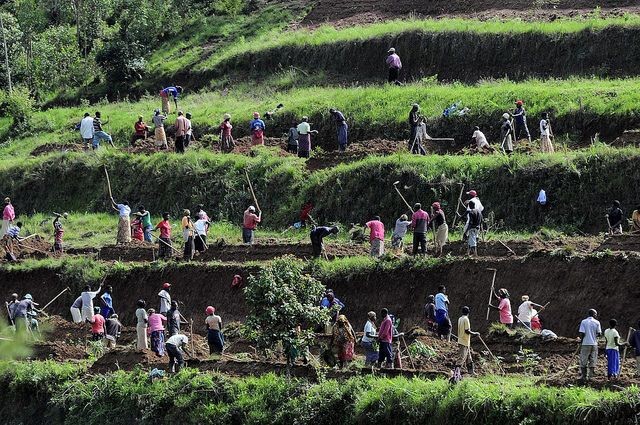
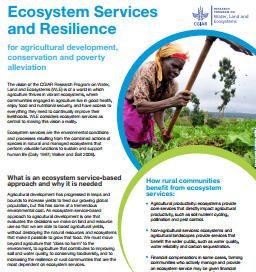
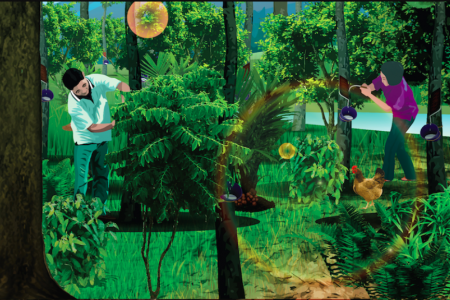







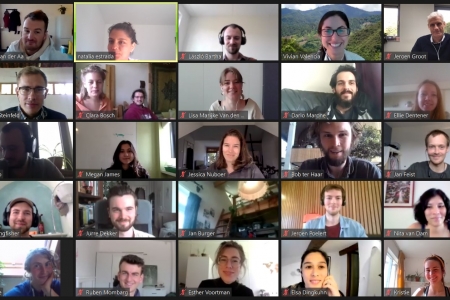



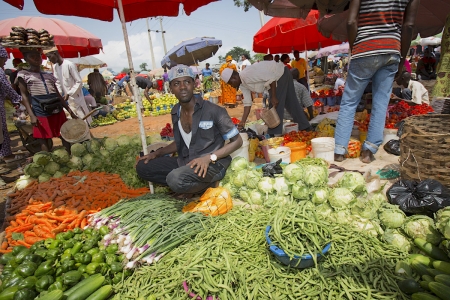


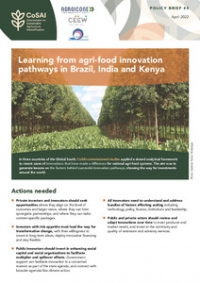
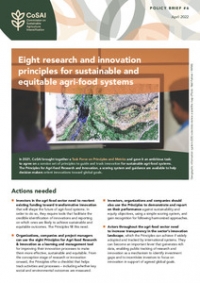
Comments
Spent more than 30 years developing an ecological approach to freshwater fish farming, (choosing trout/ carnivorous sp/ high water quality parameters) To make the task as hard as possible so as to roll-out for any freshwater fish species.
Designs that enhance aquatic food chains is the key requirement for sustainable & continuous fish production. The surrounding terrestrial habitat is as much apart of that ecological framework and ecological interactions between aquatic and terrestrial environments should not be considered as separate.
Completely agree Larry. We are hoping that this approach will help to make your point a reality. Already this is a major part of the take home message of the Aquatic Agriculture Systems (its just just about the fish!): https://aas.cgiar.org/
WLE has already established several points of engagement with the farming system research programs to create a multiscale vision - from fields to landscapes.
I agree with the eight principles of an ecosystem service approach. It was early in my research and practitioner experience that I recognized that my situation as a farmer in the US Midwest could be considered parallel to forest aborigines in third world economies; we were both practitioners providing provisional ecosystem services to meet the world's demand within the context of an economic system that did not support the production of regulating ecosystem services.
Some concepts and terms that emerged in my work include ecocommerce, shared governance, strategic doing, symbiotic demand, landscape intelligence, disruptive conservation, and farm asset portfolio.
Thanks Tim, I think that the points that you make on the governance issues are certainly key - and probably the weakest point of our framework at this stage. I would be interested in hearing more about "disruptive conservation" as I am not familiar with the term.
Hi Fabrice -
Disruptive Conservation is described in the following blog: https://blog.ecoagriculture.org/2013/08/30/disruptive-conservation-sunris...
Much more detail to the effort, but a good primer.
The eight principles seem to constitute a reasonably comprehensive framework, but one factor appears to be missing: incentive. What are the incentives for the people "on the ground" to move to a more resilient approach? What are the incentives for the institutions to change their policies to move to a more resilient approach? When basin-wide resilience conflicts with sub-basin priorities, what incentive is provided to encourage trade-offs to meet basin-level goals?
@Chris Hermansen - yes, incentives are a must! Good observation.
Certainly a point that we spend a lot of time thinking about. In the fuller version of the WLE Ecosystem Service Framework, we have spent quite a bit of time considering synergies and tradeoffs. There will be points of conflict no doubt. Negotiation and dialogue will need to be emphasized as an important element of the framework. For incentives, we identify the three means by which ES benefit people - for agriculture, the incentive should be seen through improvements in yield, reduced costs, increased resilience. We recognize a second pathway which is through financial mechanisms, which includes PES, certification, or greater market access - we need much better dialogue between markets and ES providers. And finally direct benefits such as hazard mitigation, non-timber forest products, etc... Alex Fremier and I recently published a paper with other colleagues on matching ecological and governance scales : Understanding Spatiotemporal Lags in Ecosystem Services to Improve Incentives
There are a number of options available to utilize ecosystems services to reduce poverty and this depends on where (scale) and what ecosystem (e.g. aquatic, forest or watershed) you need to utilize. Speaking from an African perspective where majority smallholder farmers rely on soil, options include up-scaling Conservation Agriculture (i.e. minimum soil tillage, permanent soil cover, crop rotations or Agro-forestry (i.e. integrating crops with trees that release nitrogen into the soil). The idea is to increase total soil carbon which is critical in making agriculture more productive and hence address poverty. Further, such an approach would lessen pressure on forests since there would be no slash and burn practices that degrade ecosystems. Obviously, the benefits would be multiple since this would enhance services such as pollination (more productivity), water provision and purification etc.
I think that this is the right kind of thinking Muleba. We do want to however make sure that ES become part of a transformative approach - how are ES mobilized to improve the lives of the poor. Agroforests and trees are an important element here, however I would urge us to think about a portfolio of systems, including wetlands, grasslands, forests, and agricultural systems themselves. For WLE in particular, how does and ES based approach scale up to provide for landscape scale benefits, and what does this mean for securing common-pool resource
Add new comment